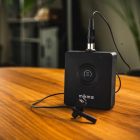
Are you ready to take your pcb assembly game to the next level? In this article, we will delve deep into the world of industrial equipment and its crucial role in the PCB assembly process. Whether you are a seasoned engineer or a newcomer to the field, this comprehensive guide will provide you with valuable insights, tips, and suggestions to help you excel in the world of PCB assembly.
Industrial Equipment in PCB Assembly: The Backbone of Quality
Industrial equipment is the unsung hero of the PCB assembly industry. It comprises a wide range of machinery and tools designed to ensure precision, reliability, and efficiency in the assembly process. From pick-and-place machines to reflow ovens and solder paste printers, each piece of equipment plays a vital role in producing high-quality PCBs.
Key Considerations for Selecting Industrial Equipment
- Production Volume: The first step in choosing the right industrial equipment is determining your production volume. Different machines are designed for varying production scales, so it’s essential to match your equipment to your production needs.
- Automation Levels: Consider the level of automation you require. Fully automated machines can significantly reduce labour costs and increase throughput, while semi-automated machines offer a balance between manual and automated processes.
- Accuracy and Precision: PCB assembly demands utmost precision. Look for equipment with high accuracy and repeatability to ensure consistent quality.
- Compatibility: Ensure that your chosen equipment is compatible with the specific components and PCB designs you work with. Some machines may have limitations on component sizes or types.
Tips for Efficient PCB Assembly
- Workflow Optimization: Streamline your assembly process by carefully planning the workflow. This includes component placement, soldering, inspection, and testing stages. A well-organized workflow can significantly reduce production time and improve efficiency.
- Quality Control: Implement robust quality control measures at every stage of the assembly process. Regular inspections, testing, and quality assurance checks will help catch and rectify issues early, saving time and resources.
- Employee Training: Invest in training programs for your assembly team to ensure they are proficient in operating and maintaining the industrial equipment. A well-trained workforce can maximize the potential of your machinery.
In conclusion, mastering pcb assemblywith industrial equipment requires careful consideration, planning, and a commitment to quality. By selecting the right equipment, optimizing your workflow, and focusing on quality control, you can elevate your PCB assembly game and achieve exceptional results. Remember, the key to success in this field lies in a combination of the right equipment and a dedicated, skilled team. So, go ahead, take the plunge, and unlock the full potential of PCB assembly with industrial equipment!




